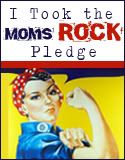Providing a safe sleep environment is the single most important step you can take to reduce your baby’s risk of SIDS, suffocation and accidental infant deaths. Take time during your pregnancy to learn all you can about providing a safe sleep environment for your precious bundle!
#1 - Back is best! Placing your baby on his or her back is the only sleep position recommended for babies. Side and stomach positions are not safe alternatives.
#2 - Where should my baby sleep? For at least the first six months, your baby’s crib or other separate sleep surface should be placed in your room, near where you sleep. Research shows that being in close proximity to your baby during sleep can greatly reduce the risk of SIDS.
#3 - The safest sleep area is a crib that meets current safety standards! The mattress should be firm and fit snuggly in the crib. For parents looking for safe alternatives to a crib for their sleeping baby, such as a bassinet, cradle or co-sleeper, click here. Visit www.cpsc.gov or www.jpma.org for crib safety standards.
#4 - What about sharing a sleep surface? Remember, adult beds, sofas and chairs are not safe for sleeping babies and can greatly increase the risk of SIDS, suffocation and accidental infant deaths. Bring baby into your bed to feed and bond, but when its time for sleep, place your baby alongside your bed in his or her own separate, safe sleep area.
#5 - Be wary of soft bedding and blankets! Anything loose, soft or fluffy in your baby’s sleep area can be dangerous. Take care to remove pillows, blankets, sheepskins, bumpers, stuffed toys and other soft objects from your baby’s sleep area when placing them down for nap and nighttime sleeps.
#6 - Keep your baby warm and safe during sleep! Loose blankets in your baby’s sleep area can be dangerous. Consider using a wearable blanket or other type sleeper to keep your baby warm and safe.
#7 - Never put your baby to sleep on top of any soft surface! This includes adult beds, waterbeds, comforters, sheepskins, pillows or cushions.
#8 - Pacifiers can further reduce the risk of SIDS! Experts recommend giving your baby a pacifier every time you place them down to sleep. By following the First Candle Guidelines for Pacifier Use, parents and caregivers can avoid concerns about breastfeeding and long-term dental problems.
#9 - Take care not to overheat your baby with too much clothing or too warm of room! Overheating is a leading risk factor for SIDS. Layer clothing as needed (no blankets!) and keep room temperature at a level that would be comfortable for a lightly clothed adult.
#10 - Educate everyone that cares for your baby about these safe sleep tips!


























